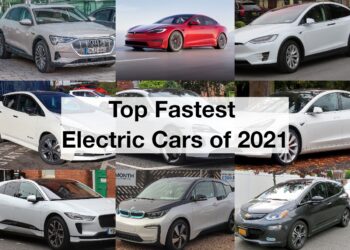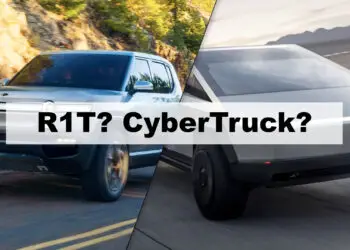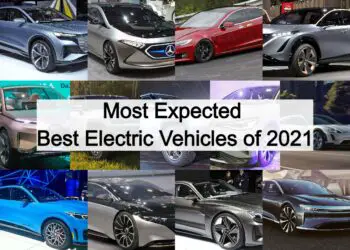Electrification is one of the most trending topics in 2021. here we brought you some major ICE to pickup truck electric conversions we found through the internet. let’s get started.
It might take some getting used to because you can’t tell the vehicles running until you put it in gear and start driving. the only noise you hear is the road noise of your tires. pretty much and you hear a slight noise from the motor due to the brushes on the commutator bars. then there’s the top speed of 48 mph. what bud wren doesn’t miss stopping at the gas station, changing oil, checking antifreeze, and replacing belts, and hoses there aren’t.
I started by pulling the motor out exhaust gas tank, entire fuel system, radiator, etc., and gutted the truck here in Campbell’s Island Illinois using a scavenged motor controller. from his job as an electric fork truck mechanic and good old Yankee ingenuity. he has done a thousand-dollar conversion on a 1988 Mazda pickup truck.
This is the motor. this was a half-inch plate of Steel. it used to be a manhole cover. John root, a renewable energy consultant says bud is absolutely on the right track. all you need is a DC motor which we’ve had in the industry for hundreds of hundreds. but charge controller and then you’ve got batteries.
You may also like to read: Electric Crate Motors: Revolution of ICE to EV
The weak link is in the batteries. because of their weight, we need to put our R&D money into lightweight batteries. Bud’s truck will run about 25 miles on a charge using about 50 cents worth of electricity. in other words less than two cents a mile.
Next goal converting a car for his wife Sharon who commutes to work on the interstate every day meanwhile he’s building his dream garage with a plan to start a conversion business. I’m pretty excited about it you know it’s been a dream of mine you know. I’ve been wanting to do it for a long time. it’s just the beginning of men’s projects that I plan on doing you know to help the environment for assignment earth.
Ford Ranger Conversion by EV West
We’re gonna give you a little walkthrough of our 2003 ford ranger. this is our shop truck over here an EV West. and man we really love this thing. it’s a great truck super fun to drive. superfast. great little truck and a nice little simple system. what we have is we have a DC system running at 250 volts.
We create that power with about seventy-six cab 180 amp power lithium iron phosphate batteries. that power goes to our DC controller. it’s rated at a thousand amps. so plenty of power that drives our net gain warp nine motors down below.
You may also like to read: In-Depth Study – Electric Vehicle Batteries (High Voltage Traction Battery)
In front of that, we have our EV West adapter plate and pump system. what we have is we have a factory. air conditioning pump over here. so we still have our air conditioning in the pickup truck. in the middle there we have a belt-driven vacuum pump. we really like the belt-driven pump. it creates plenty of vacuum, and it’s a really nice and quiet running pump. on the far right over there we have our KRC power steering pump.
Another item that we really like over here, it’s got an interchangeable valve system that allows you to control the volume of the power steering pump. so it’s really Universal on what application you put it in anything from a small light sports car to a heavy-duty truck.
Here we just wanted to give you a close-up. so you could actually see the pumps working up close. we have the air conditioning pump, the brake vacuum pump, and on the far end, we have the power steering pump. we have an idler tensioner down below.
Acrank pulley at the very bottom. on the far right over here what we have is we have a DC-DC converter it’s running at 500 watts, and that’s quite a bit of power so what that did is it allowed us to use a smaller 20 amp power absorb gas mount battery. and that’s a real weight saver and when you’re building an EV you need to save all the weight that you can.
Upfront here, we have the Elkin PFC 5000 charger. we put this in a kind of a unique installation. what we have is we have a removable rack up here that’s used for the factory radiator. and we took advantage of that by mounting it to a frame here. that allows us to pull the charger out disconnect a couple of Anderson plugs down here. use this charger in the shop when we’re you know we have an extra car in the shop, or we just need to use the charger externally. so it’s a great little universal item there real modular works great for us.
The system is liquid-cooled. we have a CPU cooling system over here with a dual-fan radiator system. and then on the backside here we have a reservoir in our pump. that’s just about it for under the hood.
Let’s go back and take a look at the battery pack all right so here we are at the back of the Ranger what you see is we have three separate battery packs in the rear of the Ranger. we actually have one more in the extra cab that’s what we call our range extender. it’s a smaller pack and it’s actually removable if we ever need to take it out for extra cargo space. our three battery boxes back here I made out of 3/16 aluminum, and they’re welded up coated in a chip guard.
Then what we do is we use the marine starboard four covers. so our batteries are underneath that keeps them out of the environment keeps them nice and safe. and at the same time, these are held securely down especially when the bed is bolted on top.
We have a real clean simple installation back here. in here an EV West, we always recommend running all of your high voltage traction cables and international orange for safety reasons. so we have clearly marked visible cables back here. and we also have our contactor back here. our every 200 Tyco contactor. and we use this for a safety disconnect it’s in the middle of the packs.
Along with our safety disconnects upfront. so we really like to be redundant with safety and you can almost never have too many disconnection points. so we have one of these back here in the back of the pack and feel a little bit better for. now that we’ve shown you the front now let me showing you the back let’s just jump in this thing and see what it can do.
All right now that we had some fun out on the road with our pickup truck. we’re gonna go ahead and wrap this walkthrough up. just wanted to mention our instrumentation inside. we are using as a tracks link Pro. and we are using the Ziva fuel gauge driver. we really like those and we really like to keep our OEM gauges.
We don’t like to fuss up the dash or change things too much. so we really like to take the gauges in their current state. and kind of figure out a way to use them the way that the car designers originally intended. so that pretty much wraps up our Ford Ranger here again this is Michael Breen with EVs TV and we want to say we’ll see you next time take care.



